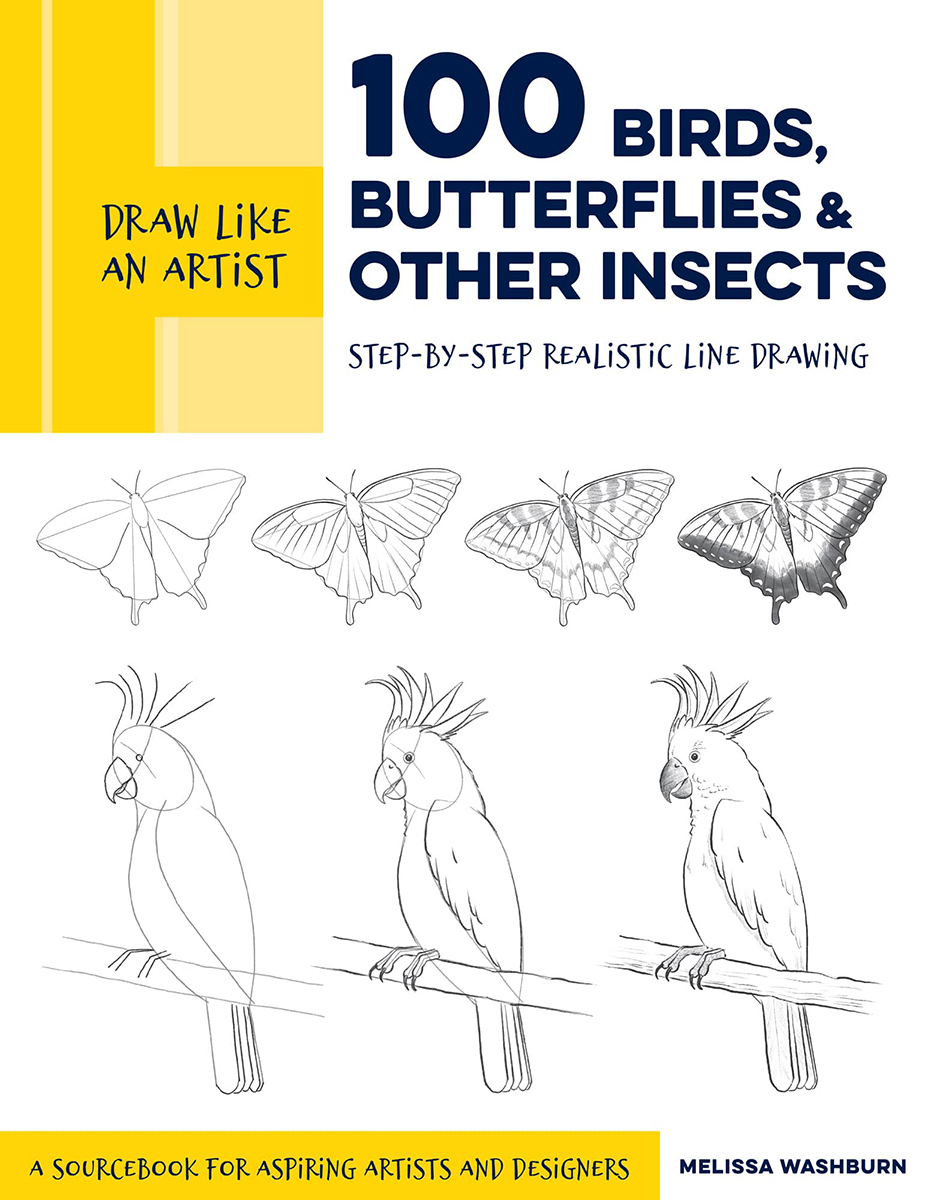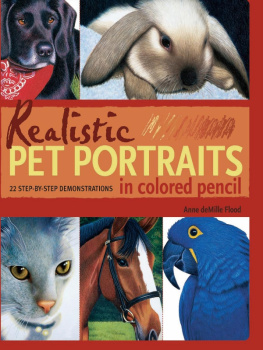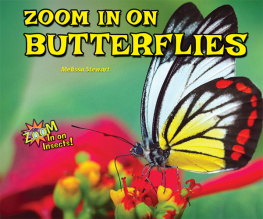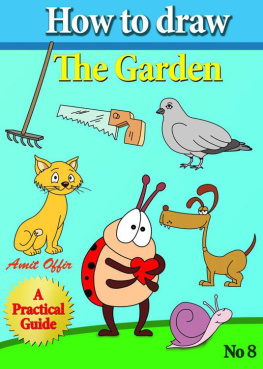Melissa Washburn - 100 Birds, Butterflies, and Other Insects: Step-by-Step Realistic Line Drawing
Here you can read online Melissa Washburn - 100 Birds, Butterflies, and Other Insects: Step-by-Step Realistic Line Drawing full text of the book (entire story) in english for free. Download pdf and epub, get meaning, cover and reviews about this ebook. year: 2020, publisher: Quarry Books, genre: Children. Description of the work, (preface) as well as reviews are available. Best literature library LitArk.com created for fans of good reading and offers a wide selection of genres:
Romance novel
Science fiction
Adventure
Detective
Science
History
Home and family
Prose
Art
Politics
Computer
Non-fiction
Religion
Business
Children
Humor
Choose a favorite category and find really read worthwhile books. Enjoy immersion in the world of imagination, feel the emotions of the characters or learn something new for yourself, make an fascinating discovery.

- Book:100 Birds, Butterflies, and Other Insects: Step-by-Step Realistic Line Drawing
- Author:
- Publisher:Quarry Books
- Genre:
- Year:2020
- Rating:5 / 5
- Favourites:Add to favourites
- Your mark:
- 100
- 1
- 2
- 3
- 4
- 5
100 Birds, Butterflies, and Other Insects: Step-by-Step Realistic Line Drawing: summary, description and annotation
We offer to read an annotation, description, summary or preface (depends on what the author of the book "100 Birds, Butterflies, and Other Insects: Step-by-Step Realistic Line Drawing" wrote himself). If you haven't found the necessary information about the book — write in the comments, we will try to find it.
Melissa Washburn: author's other books
Who wrote 100 Birds, Butterflies, and Other Insects: Step-by-Step Realistic Line Drawing? Find out the surname, the name of the author of the book and a list of all author's works by series.
100 Birds, Butterflies, and Other Insects: Step-by-Step Realistic Line Drawing — read online for free the complete book (whole text) full work
Below is the text of the book, divided by pages. System saving the place of the last page read, allows you to conveniently read the book "100 Birds, Butterflies, and Other Insects: Step-by-Step Realistic Line Drawing" online for free, without having to search again every time where you left off. Put a bookmark, and you can go to the page where you finished reading at any time.
Font size:
Interval:
Bookmark:

Draw Like an Artist
Step-by-Step Realistic Line Drawing A Sourcebook for Aspiring Artists and Designers
MELISSA WASHBURN

My fascination with the natural world started in my childhood in the Adirondack region of upstate New York. Ive always needed to know the names, characteristics, and life cycles of the plants, insects, birds, and animals around me, so it seemed natural (no pun intended) that these subjects would become a major theme of my work as an artist and illustrator.
The best teacher for drawing birds and insects is nature itself. Observing different birds and insects in their natural habitats will help you understand how they move and behave. Some of these creatures move very quickly and constantly, making observation difficult, so visiting places like natural history museums and zoos can help you get a better look. Mounted specimens are useful for looking up close at feet, antennae, feathers, etc., that are often lost or difficult to see in photographs, and bird skeletons can give valuable information about the underlying structures hidden by all those feathers. As you become more familiar with anatomy and continue to practice drawing, your work will show more confidence and realism. This book shows birds and insects in a variety of different poses and angles, which can be helpful in understanding how to construct them in a more three-dimensional way.
Drawing any kind of animal can seem very complex at first (it is!), so I suggest first getting a feel for proportions and for the basic shapes that make up the body. Beginning with the underlying shapes, rather than with the exact outer contour of the animal, will give a more solid feeling to your drawing. Once youre happy with the basic shape, you can refine the outline and add legs, wings, and so on. The final step is to add things such as hair or feathers, markings, and other details. You dont need to draw every individual strand of hair or featherjust a few lines to indicate length and direction will often convey enough information. Scientific illustration follows a more specific set of conventions and level of detail than I demonstrate here, and there are a number of excellent references available on the subject for the interested student.
This book isnt organized by scientific classification but by generally recognized types. Many people think of butterflies as quite different from other bugs, but they belong to the same class of animals as beetles, grasshoppers, and flies: Insecta. All have six legs, three main body parts, wings, and a chitinous exoskeleton. Theyre fun to draw and fun to learn about. Beetles (order Coleoptera) alone includes over 350,000 identified species! They arent pests but are pollinators, decomposers, and other vital contributors to our ecosystem. Birds encompass a number of different orders, from the Accipitriformes (birds of prey, including the bald eagle and red-tailed hawk) to our beloved backyard birds in the order Passeriformes such as the northern cardinal and tufted titmouse in North America.
I hope this book introduces you to the basics of drawing some of my favorite creatures and gets you comfortable with and curious about depicting some of the wildlife all around us.
There are many tools, mediums, and styles in which to draw birds and insects. This book uses some techniques Ive learned over the years and shows the methods Ive found most useful for understanding the basics of drawing realistically. The figures and steps can be copied directly to achieve a finished drawing, and the processes and methods can be used for drawing many other subjects, whether plants, animals, or anything else.
Graphite pencil. At a minimum, a standard HB pencil, but harder pencils (2H, 4H, etc.) are useful for making lighter lines and underdrawing, while softer pencils (2-6B) are helpful for more dramatic lines and shading.
Felt tip pens or brush pens
Smooth paper, at least 80lb
Eraser. I recommend a kneaded eraser, which erases very cleanly without smudging and doesnt leave crumbs on your paper.
Begin the drawing with your harder pencil so your lines will be light and easy to erase (but make sure youre not pressing too hard and making an indent on the paper). Once youre satisfied with your shapes and basic contour, you can go over the drawing with your soft pencil or drawing pens. You can then erase your lighter pencil lines for a clean, finished drawing.
Every subject in this book begins with solid shapes or directional lines to describe the general proportions of the subject. Its important to establish the correct proportions in the first step. How large is the head relative to the body? Whats the general shape of the animals pose and main body sections? Next, gestural lines are added to show the position and proportions of features (eyes, beak, etc.), wings, and/or tail. In the example of the cardinal below, step 1 shows simple shapes to establish the placement of the head and body. Step 2 adds some contour/shape to the neck as well as some gestural lines to find the placement of the eye, beak, wings, and tail. Step 3 shows the full contour of the wings and beak and the placement of the feet on the perch.

While nothing in nature is perfectly symmetrical, using tracing as a technique to establish symmetrical proportions and features, especially on insects, can be useful. Its not cheating! You can draw one side of a butterfly, for example, and then trace your work and use transfer paper to flip the image and give yourself guidelines for the other side. As you develop your hand-eye coordination, drawing symmetrically and getting proportions correct will come more naturally, but as a beginner, tracing can be a useful learning tool.

Once you establish the basic shapes and proportions of the subject, you can start to define the more detailed contours and features. The middle steps (generally steps 3 and 4 or 4 to 6) are the construction steps. In this stage of the drawing, you are establishing the three-dimensional quality of the animal. In this Canada goose example, step 4 begins to add some of the individual feathers and the contours of the body around the legs and feet. In step 5, more details are added, and the final lines and surface detail are refined.

Final lines and small details come last. Here, you add things such as the suggestion of fur or feathers, surface markings, or a little bit of shading. Once youre happy with your work, go over your contour lines with a pen and add more detail. Finally, erase your pencil lines. In step 7 of the buckeye butterfly drawing, you can still see the light pencil lines of the general shapes we started with, but some final details such as the placement of the butterflys spots and some of the body fur is added. In step 8, the lighter lines have been erased, and final color and shading have been added to show both the coloring and more of a suggestion of the fuzziness of the butterflys body. In this final step, any shading to show shadows will also be added.
Font size:
Interval:
Bookmark:
Similar books «100 Birds, Butterflies, and Other Insects: Step-by-Step Realistic Line Drawing»
Look at similar books to 100 Birds, Butterflies, and Other Insects: Step-by-Step Realistic Line Drawing. We have selected literature similar in name and meaning in the hope of providing readers with more options to find new, interesting, not yet read works.
Discussion, reviews of the book 100 Birds, Butterflies, and Other Insects: Step-by-Step Realistic Line Drawing and just readers' own opinions. Leave your comments, write what you think about the work, its meaning or the main characters. Specify what exactly you liked and what you didn't like, and why you think so.





